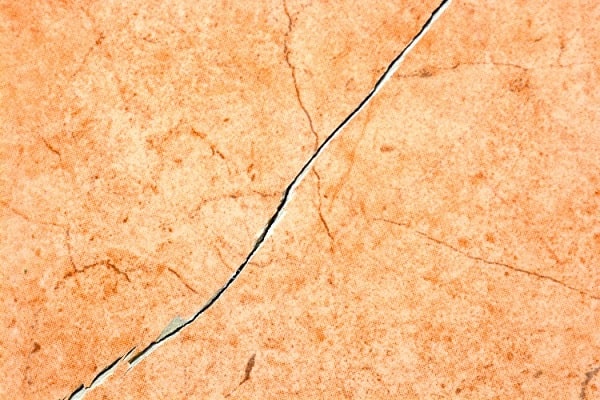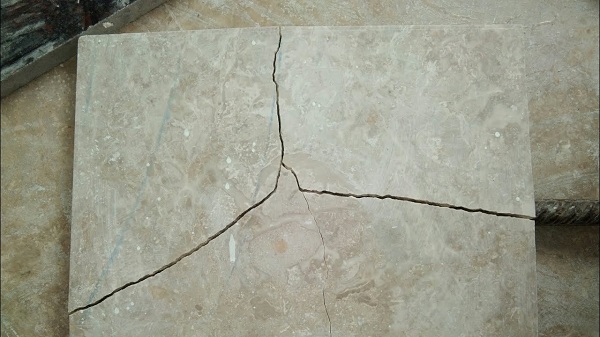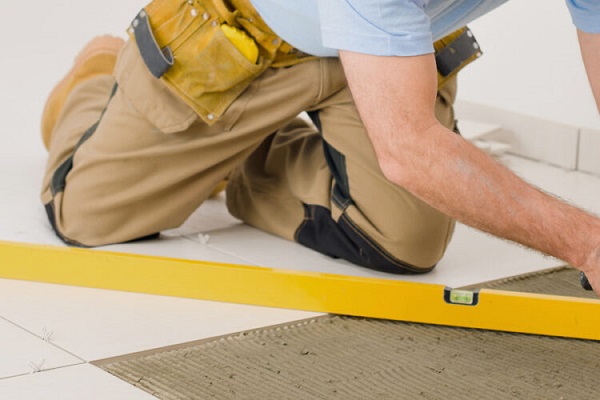by Liz Gonzales
Nobody likes coming across a cracked ceramic tile.
Because it is so rare to come across cracked ceramic tiles, it can be difficult to figure out what to do to repair them.
This leads to the tile either being ignored until enough money is saved up to get the tile completely replaced, or leads to you trying to repair it yourself but not succeeding, resulting in the tile cracking even more.
Ignoring the cracked tile is never a good idea, hiring somebody to repair the tile may be out of your budget, and repairing it yourself might not be a good idea either because an improperly repaired cracked tile may result in the tile cracking even more in the future.
Contents
Improperly repaired ceramic tiles can lead to you having no choice but to spend money to get the tiles replaced as well, which can be very troublesome.
This is why it is so important to know how to repair a cracked ceramic tile properly. If you know how to do this, you will save money because you will not need to pay somebody to replace the tile.

Knowing how to repair a cracked ceramic tile properly will also take away a lot of guesswork when it comes to repairing other ceramic tiles in the future.
There are a few things that you should know before taking the steps to repair your ceramic tile. If you know what can cause cracked tiles and if you also know what to do to prevent tiles from cracking in the first place, you won’t need to spend the time and money necessary it takes to repair them.

When most think of cracked tiles, they usually think of something really hard falling onto the tile. And while it is true that a tile can crack from the impact from furniture or something else, there are a few other things that cause tiles to crack.
Ceramic tiles may last very long when compared to other kinds of flooring, but they do not last forever and are subject to wear and tear just like any other kind of flooring, specifically other tiles.
Something that can cause this kind of wear and tear is dirt and other particles that gets stuck in between the spaces of the tiles. The spaces of these tiles make up the foundation that the tiles rest on, and if too much dirt builds up in them, it will cause the tiles to degrade from the bottom.
This degradation from the bottom will cause the tile to weaken over time, which will then cause it to crack. And different than a tile that cracks because of something falling onto it, tiles that crack this way are even more difficult to repair because the cracks usually develop on the side of the tile.

Preventing this means you need to do all you can to make sure that these spaces in between the tiles are as clean as they can be. Although they will never be perfectly clean, you should still be able to know when these spaces are getting too dirty.
One easy thing that you should do to prevent tiles from cracking this way is to make sure that they are always dry unless you are cleaning them. If a tile gets too wet, it will take away from its ability to hold itself together, since standing water can often make things erode naturally.
You see this with other kinds of surfaces all the time. We all know how much water and other wet substances can make things very damp to where they become very delicate. This is also true of ceramic tiles, only the effects are not seen right away. This makes it even more important to make sure your ceramic tiles are dry. Make sure they are dry after cleaning them as well.
Preventing tiles from cracking in the first place is much more important than just knowing how to repair cracked tiles and not taking any precautionary measures at all. But if you still need to repair a cracked ceramic tile even after taking all of these precautionary measures, knowing how to do it yourself is much more favorable than getting the entire tile replaced.

Repairing a cracked ceramic tile can be a very complicated task, but it can be made simple if you possess all of the right things, know how to use them, and know when to use them.
The first thing you need to know is what holds ceramic tiles together. The substance that you will use on the side of the tile is different than the substance that you will use to hold the tile to the subfloor that it is placed on.
Making this mistake is common and in a lot of cases, it will result in an incomplete repair.
Knowing what puts ceramic tiles together will solve this issue.
First, you need to know about the hardness ratings of the tiles themselves. These ratings depend almost completely on the room that the tiles are located in. They have ratings from 1 to 5, with 1 being the least hard and 5 being able to withstand heavy foot traffic.
The next thing you need to do is determine the hardness rating of the ceramic tile you need to repair. If you repair the tile with something that yields a different hardness rating, the tile will probably remain cracked.
You also need to know what puts the tiles together. Tiles are secured to the subfloor with thin-set adhesive, otherwise known as Portland cement mortar. The gaps between the tiles are held together with cement grout or unsanded grout.
These are the general materials that you need to know about when either repairing a cracked tile or putting a new tile in.
There is not much of a difference between the two, but repairing a cracked tile does entail a few different procedures.

Putting in new tiles involves laying the tile onto the subfloor with the Portland cement mortar, then filling the gaps with cement grout or unsanded grout, depending on how wide the gaps are.
Repairing a cracked tile is a similar process, only there are three major differences.
First, do not forget that you are lying part of a tile onto the subfloor and not an entire tile. Because of this, you’ll need to cut the new tile to resemble the crack in its exact form.
You also need to connect the side of the cracked tile to the rest of the tile. Because of this, you’ll need to apply some of the grout to the side of the tile and along the outer crack.
If the crack of the tile is split down the middle, you’ll probably need to replace half the tile.
To do this, remove the half that you want to replace with a trowel, then cut your replacement tile to fit the half that you just removed. Apply a bit of Portland cement mortar to the bottom of the tile, very little cement/unsanded grout to the side of the tile, and complete the other half of the tile with the new tile.
When it comes to partially cracked tiles, You’ll either need to cut the new tile to fit the partial crack then follow the above procedure or remove the tile completely and put in a new tile. This is completely up to you and what you are comfortable with.
Repairing cracked ceramic tiles is not nearly as difficult as people think it is. If you have the right materials and know how to use them properly, you’ll be able to repair cracked ceramic tiles completely by yourself without needing to hire anybody to do so.
When you know how to repair cracked ceramic tiles by yourself, you will save yourself all kinds of money and even time on repair specialists.
 |
 |
 |
 |

About Liz Gonzales
Liz lives in a suburb in New York city.
Both of her parents are the art professors at Sate University of New York.
As such, Liz grew up with all kinds of art objects, portraits, and books laying around the home.
Liz met up with Linea through another friend in some kind of online art forum. There great minds sparkled to take their passions onto the next level @ linea.io.
 |
 |
 |
 |
You can Get FREE Gifts. Furthermore, Free Items here. Disable Ad Blocker to receive them all.
Once done, hit anything below
 |
 |
 |
 |